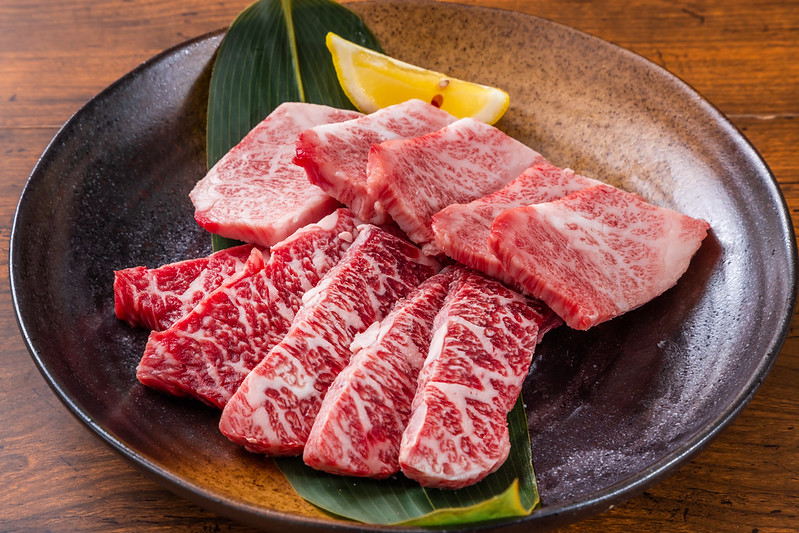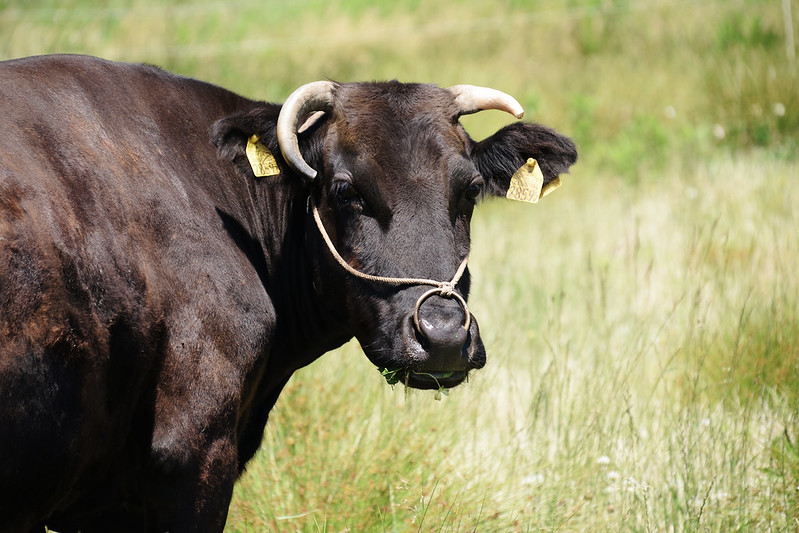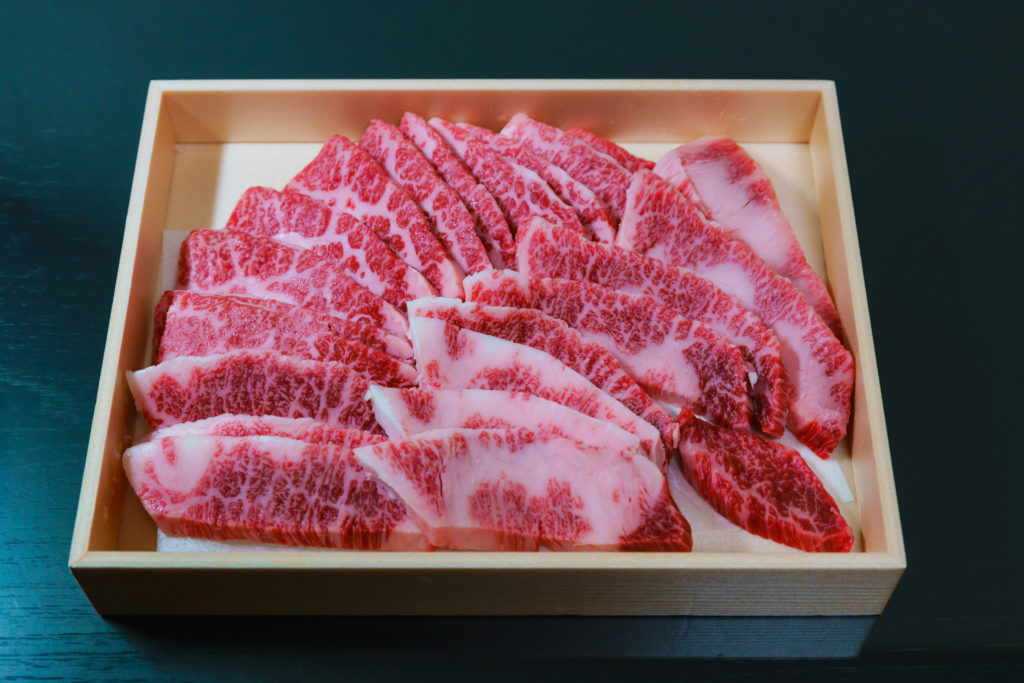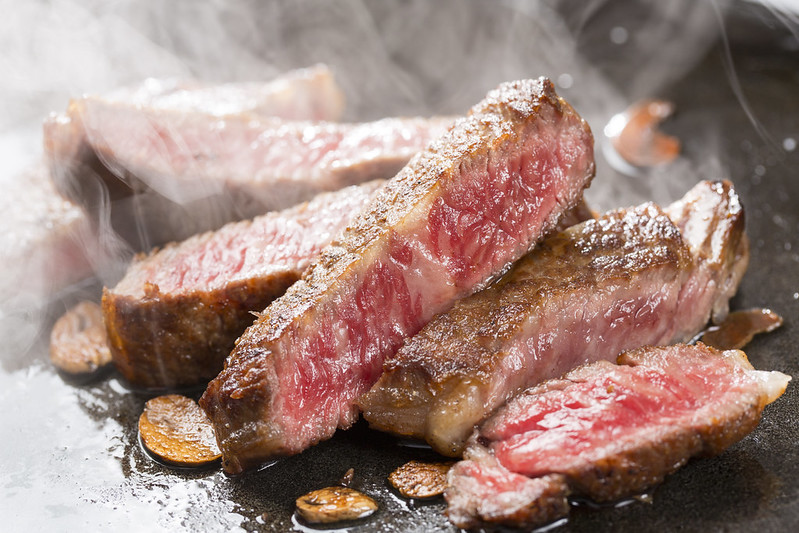
Wagyu: A Slice of Red Meat Heaven
Any carnivore would appreciate a big, fat, juicy slice of steak, a mouthwatering cheeseburger, or a slab of barbecued ribs smoked for hours and slathered with sauce. Early American settlers had bountiful resources for meat, including beef. The renowned English writer Charles Dickens wrote about his visit to America, mentioning “no breakfast was breakfast” without a T-bone steak. Beef has always played a large role in the American diet. According to the National Cattlemen’s Beef Association in the 2014 Cattle Inventory (as of July 1, 2014), the total U.S. beef consumed was 25.5 billion pounds. That’s a lot of beef!
Japanese beef gift box.
In Japan, cattle were introduced as work animals in the second century, used in the fields when planting rice. Japan, as an island nation, included smaller regions with an isolated breeding process. The Japanese developed and maintained distinct qualities in their meat that greatly differed from breeds of cattle in other parts of the world.

Wagyu – Japanese shorthorn.
The Shogun, one of the military governors of Japan from 1192 to 1867, closed cattle herding and banned the consumption of meat from any four legged animal from 1635 through 1838. During the late 18th century, Japanese cattle were interbred with other European breeds such as Shorthorn, Devon, and Brown Swiss. Wagyu (和牛 Wagyū) which literally means “Japanese cow” are several breeds of cattle prized for their organic unsaturated fat such as omega-3 and omega-6 fatty acids and marbling (intramuscular fat giving meat its marbled appearance). More marbling means more monounsaturated fats. There are four breeds of wagyu: Japanese Red, Japanese Shorthorn, Japanese Black, and Japanese Polled. These breeds lead to other strains of cattle. Kobe beef (神戸ビーフ Kōbe bīfu) is a cut of beef from the Tajima strain that are raised in Hyogo Prefecture.
The breeding of Japanese wagyu has very specific techniques in order to maintain bloodlines and quality. Apparently, massaging the cattle or adding sake to their feeds were observed. This was done not to add more flavor to its already intense essence, but rather to aid in the digestion and appetite of the cattle during humid seasons. Also, massaging may have been introduced to prevent muscle cramping for cattle that did not have enough land to walk around in smaller farms.
However you prefer your beef, whether sashimi, shabu-shabu, tepanyaki, steak, ground, sliced, roasted, fried, with rice, fries, or on a bun, you haven’t completed your culinary experience yet if you haven’t tried wagyu beef.


